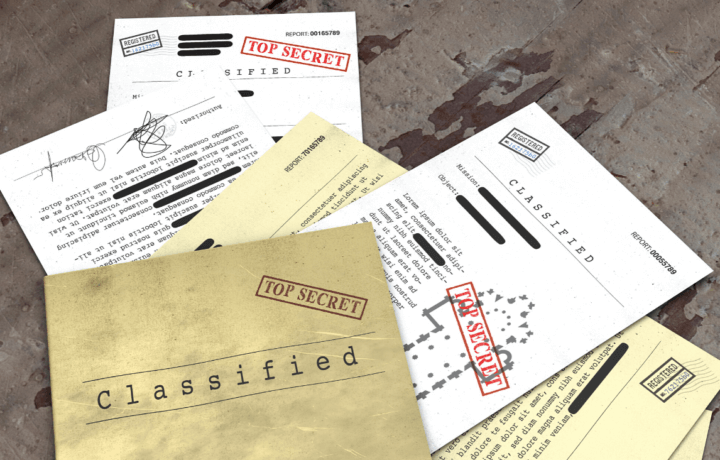At the end of every counterintelligence briefing, be it for foreign travel, conference threat awareness, or the annual CI presentation, you are advised to ‘Report’ suspicious incidents. Normally, you might go to your security manager. Generally, he’ll further direct you to some government official, the ‘investigator’. Who are the investigators to whom your reports go? What do they do with the reports? All too often, cleared personnel have the vague feeling that reports go unassessed, or worse, fall into the hands of strange gurus with blue robes festooned with yellow moons. In short, what do they do?
Leaning About Counterintelligence Professionals
A good place to learn some of the answers to these questions is from counterintelligence professionals themselves. Of course, little is written on these subjects, because to give away too much is to reveal ‘sources and methods’ which we don’t want our adversaries to have. They read our work, too, you know. An informed public is, however, what we the American people are all for. It is what keeps us a free people. So, how do we learn about those commissioned to protect us? Indeed, these professionals have provided a sworn statement to that effect that they will protect and defend the Constitution of the United States, for which they receive a badge and credentials.
Let’s consider what one professional, James M. Olson, former Chief of Counterintelligence at the CIA, has to say about his profession. Bear in mind, that all counterintelligence personnel, your local FBI or defense investigators, follow the same principles when they investigate. They want to detect, deter, then defeat our adversaries before they can plant spies, or spying equipment, or recruit spies, to steal our secrets. How they do it is the subject of his book, To Catch a Spy, The Art of Counterintelligence. He’s got a tough job, because he can’t tell all he knows, for reasons we discussed above. Rather, he has to submit his book to an official review prior to publication. This is to prevent just such unintended revelations of sources, methods, or ongoing investigations. He finds himself unable, in fact unauthorized, to simply tell all he knows. But the contest goes on. We want to do our best to defend our national interests, while the adversaries are trying their best to undermine us. It seems counterintelligence (CI) is in the news every day now.
The Art of Counterintelligence
Olson, after having his book reviewed for pre-publication security, helps make CI understandable. Indeed, he does so while placing its role in the context of secret world events happening now. Olson is concise, clear, and helpful in his presentation. A long time clandestine operative of the CIA before his CI assignment, he now teaches at the Bush School of Government and Public Service at Texas A&M. He draws on a lifetime of experience to explain what counterintelligence does, to whom, and why. CI is there to identify, counter, and defeat adversarial spies. CI people are ‘spy catchers’, for want of a summation.
Olson begins with an overview of how adversarial nations attempt to undermine ours. We read of Chinese attempts to use educational exchanges for espionage. Russia has always been known for its attempts to infiltrate and thus influence American activities, either through embassy spies, technology, or even worse, illegals. The latter are people who live secretly among us, but work directly for Russia. Then, surprisingly, there is Cuba, whose intelligence agency is identified as completely professional, and ‘punching above its weight’ in world affairs. All nations spy, only some are more dangerous than others.
All the Components of Counterintelligence
Olson then identifies 10 ‘Commandments’ of counterintelligence. Summarized, these valuable guidelines will ground a potential CI agent in the context of his profession. He’ll understand the history of espionage, how it impacts his mission to deter the threat, while at the same time insuring he knows what must be done to remain current and effective. This chapter alone is worth the price of the book. Olson takes the ancient Chinese military philosopher Sun Tzu to heart as he shows us how to ‘know your enemy’.
We learn about ‘double agents’, surveillances, and are given hints about the whole new world of computer counterintelligence. What the reader will find of value are the case studies of actual spies written about ‘in depth’. This means, we’ll know about these espionage cases in as much detail as possible, for Olson clearly indicates where his study had to be circumscribed due to classification considerations.
We learn of spy cases from Anna Montes who spied for Cuba, to the 10 Russian ‘sleeper’ agents placed in America under false identifies, the better to infiltrate our national organizations. We learn of Larry Wu-Tai Chin, a spy for China whose recruitment is a puzzle. So much of the role of counterintelligence is covered in these studies you’ll understand what it does by how it works. You’ll also see where some pre-employment interviews failed to identify security risks, where the polygraph worked, or not, and a host of other methods. After concluding this book, you’ll know what a rich field of reading awaits you in the now understandable world of counterintelligence. It’s important to take advantage of what’s been written, in order to study and learn the world that you work in.




